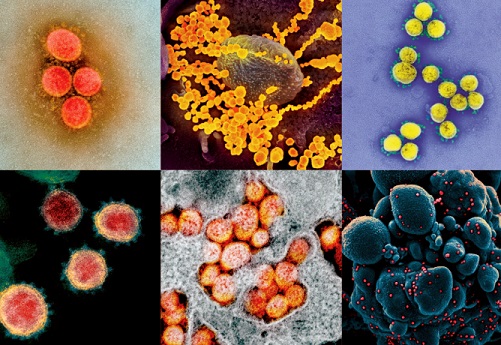Indian Researchers Discover Role of REST protein in Neuronal and Non-Neuronal Viral Infections
Nikhil Prasad Fact checked by:Thailand Medical News Team Feb 12, 2025 2 months, 2 days, 7 hours, 39 minutes ago
Medical News: Understanding the Role of REST in Virus Infections
Viruses have long been a subject of fascination and concern due to their ability to infect and manipulate host cells. One such molecular player in the complex interaction between viruses and their hosts is the Repressor Element-1 Silencing Transcription Factor (REST), also known as Neuron-Restrictive Silencer Factor (NRSF). This transcription factor has been widely studied in neurobiology for its role in regulating genes in neuronal and non-neuronal cells. However, recent findings highlight its involvement in viral infections, revealing both its potential to suppress and facilitate viral persistence. This
Medical News report examines new insights into REST’s role in various viral infections, including its impact on herpesviruses, human immunodeficiency virus (HIV), and influenza virus.
 Indian Researchers Discover Role of REST protein in Neuronal and Non-Neuronal Viral Infections
The Institutions Behind the Research
Indian Researchers Discover Role of REST protein in Neuronal and Non-Neuronal Viral Infections
The Institutions Behind the Research
This groundbreaking study was conducted by researchers from the Institute of Advanced Virology (IAV) in Thiruvananthapuram, India, the Virology Laboratory at Cochin University of Science and Technology (CUSAT), and the Rajiv Gandhi Center for Biotechnology (RGCB), India. These experts used an in-silico analysis-based approach to investigate REST’s function in viral infections, particularly focusing on herpesviruses.
How REST Functions in Host Cells
REST is a transcription factor that represses neuronal gene expression by binding to the Repressor Element-1 (RE-1) DNA sequences within target genes. This binding regulates genes associated with neuronal differentiation, synaptic plasticity, and neurogenesis. In non-neuronal cells, REST suppresses the expression of genes that are typically active in neurons, maintaining cellular identity and function. The presence of REST is also crucial in aging, where it protects neurons from stress-related damage.
REST’s Role in Viral Infections
While REST is predominantly associated with gene repression in neurons, its influence extends into the realm of viral infections. Various viruses, including herpes simplex virus type-1 (HSV-1), Epstein-Barr virus (EBV), Kaposi’s sarcoma-associated herpesvirus (KSHV), HIV, and influenza, have been found to interact with REST to regulate their own infection cycles.
Herpes Simplex Virus-1 (HSV-1) and REST
HSV-1 is a neurotropic virus that establishes latency in peripheral neurons, meaning it remains dormant within nerve cells for extended periods. Studies show that REST can repress the Immediate Early (IE) gene expression of HSV-1 by binding to the ICP4 promoter, a crucial viral gene for reactivation. This repression prevents the virus from multiplying uncontrollably, contributing to latency. However, during viral reactivation, HSV-1 produces proteins that disrupt the REST repressor complex, allowing the virus to replicate and cause active infection.
;Epstein-Barr Virus (EBV) and REST
EBV, a well-known herpesvirus, is linked to various cancers, including B-cell lymphomas and nasopharyngeal carcinoma. Researchers conducted an in-silico analysis to identify potential REST binding sites in the EBV genome. The analysis revealed that REST may bind to the Epstein-Barr Nuclear Antigen 2 (EBNA2) gene, a critical regulator of EBV latency and transformation of infected cells. This finding suggests that REST might play a role in controlling EBV’s ability to switch between latent and active infection states.
Kaposi’s Sarcoma-Associated Herpesvirus (KSHV) and REST
KSHV, another herpesvirus linked to cancer, appears to actively degrade REST during infection. Researchers found that the KSHV latent protein Kaposin A induces REST phosphorylation, leading to its degradation via the ubiquitin-proteasome pathway. This degradation allows KSHV to activate neuronal and neuroendocrine genes, contributing to the aggressive nature of Kaposi’s sarcoma.
REST and Human Immunodeficiency Virus (HIV)
HIV, the virus responsible for AIDS, also exploits REST’s regulatory functions. In microglial cells, HIV recruits REST’s co-repressor Co-REST, along with histone deacetylases (HDACs), to silence viral gene expression. This repression helps HIV establish latent reservoirs, making it harder for the immune system to eliminate the virus. Understanding REST’s role in HIV latency could be crucial in developing treatments aimed at reactivating and eliminating latent infections.
Influenza Virus and REST
Influenza, a respiratory virus, shows an unexpected connection with REST. A study found that sialylated immunoglobulin G (IgG) enhances REST expression in alveolar macrophages, leading to suppression of NF-kB-driven inflammatory responses. This protective mechanism reduces severe lung inflammation, highlighting REST’s potential role in mitigating severe influenza complications.
The Future of REST-Based Viral Therapies
Given its role in regulating both host and viral genes, REST presents a promising target for novel antiviral therapies. Potential applications include:
-HSV-1 treatments aimed at preventing viral reactivation by modulating REST activity.
-EBV-targeted therapies that manipulate REST’s ability to repress viral oncogenes.
-HIV cure strategies that leverage REST to control latency and reactivation cycles.
-KSHV therapies designed to counteract REST degradation and prevent malignancies.
Conclusion
The discovery of REST’s involvement in viral infections offers new perspectives on virus-host interactions. By either repressing or facilitating viral replication, REST emerges as a key regulatory molecule in both neuronal and non-neuronal infections. While some viruses exploit REST to establish latency, others degrade it to activate their infection cycle. Understanding these mechanisms opens the door to developing targeted antiviral therapies aimed at modulating REST activity for better disease management.
The study findings were published in the peer-reviewed journal: Viruses (MDPI).
https://www.mdpi.com/1999-4915/17/2/234
For the latest in Virology, keep on logging to Thailand Medical News.
Read Also:
https://www.thailandmedical.news/news/understanding-how-host-cells-defend-against-viruses-through-natural-restriction-mechanisms
https://www.thailandmedical.news/news/centriolar-and-cytoskeletal-disruption-by-viruses-including-sars-cov-2-a-new-frontier-in-viral-pathogenesis
https://www.thailandmedical.news/news/impact-of-covid-19-on-the-evolution-of-other-viruses
